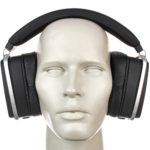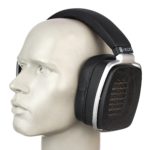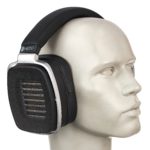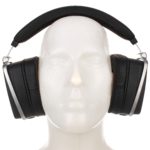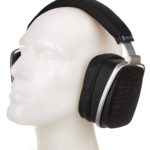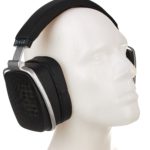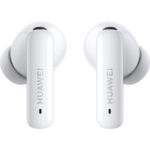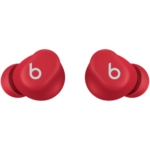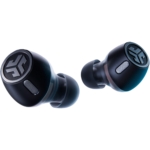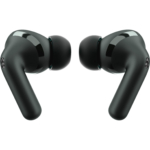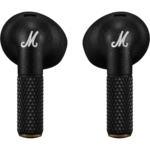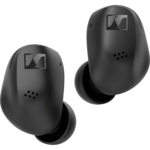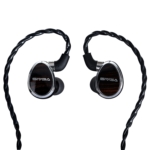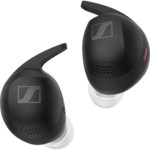The Heddphone shows that it is worthwhile to continue to question the conventional design principles of driver construction. With a retail price of 1,698 Euros, the debut product from HEDD Audio immediately ranks in the top class of headphones. The sound performance on offer means it can even compete with more expensive products. In terms of speed, transparency, spatial imaging and dynamics, this product of Berlin developers sounds simply superb, assuming that you are using a high-performance headphone amplifier. But the developers’ decades of experience and their will to achieve top-class performance are also evident in the other evaluation categories. The Heddphone is both an amazing sound engineering tool and a headphone that should cause celebration among audiophile music lovers. Personal taste will be the deciding factor with regard to their bulky appearance and weight, but under no circumstances should you miss the chance to try them out.
The Hedd Audio Heddphone is something very special: Here, the so-called Air Motion Transformer (AMT) is used in a headphone, and also as a full-range driver. This driver has already had a distinguished career in the field of hi-fi speakers and studio monitors.

The concept
Conventional loudspeaker drivers work with piston-like movements, the drive moves the respective diaphragm with a ratio of 1:1. It is different with the Air Motion Transformer (AMT), which was invented by Oskar Heil and is one of the few fundamentally independent developments in loudspeaker construction. In this transducer, a folded membrane with conductor tracks moves in a strong magnetic field. The folds open and close depending on the source signal, and are able to translate the membrane movement into a fourfold air movement. This results in higher efficiency and, as a result, an unusually fast response and high detail resolution.
From loudspeaker to headphones
The continuation of Heil’s idea is mainly due to the Berlin physicist Klaus Heinz. He first used AMT at the hi-fi manufacturer A.R.E.S., which was later taken over by Elac as JET Tweeter. Subsequently, Heinz successfully used AMT in the studio with Adam Audio. Fast forward to today: Klaus Heinz has carried on refining the design and unwaveringly continued his work at HEDD Audio (Heinz Electrodynamic Designs). One of the main results of his work is the extension of the working range of this Air Motion Transformer, which has so far been used mainly as a tweeter and less frequently as a midrange driver. In the Heddphone, the AMT now covers the entire listening range and beyond with specially adapted contouring and membrane geometry: 10 Hz to 40 kHz. The associated technology already has a patent pending under the name “Variable-Velocity-Transform” (VVT).
However the full-range version of AMT has the disadvantage of a drop in efficiency. According to the manufacturer, bass reproduction requires deeper and more voluminous folds within the air gap, which must be correspondingly larger and also equipped with stronger magnets (Neodymium N 55). Accordingly, you will need a particularly powerful headphone amplifier for this product. Fortunately, the market offers a solid selection of these to choose from. However, the device we tested certainly does not belong with a Smartphone.
In practice
The product is well packaged in a high-quality padded cardboard box. Inside is the Heddphone, which differs from most headphones in its enormous dimensions. Each ear cup is about six centimetres thick – with driver, thick padding and protective leather covering. The length-adjustable headband is also well padded. The result is a comfortable headphone, but at over 700 grams it is unusually heavy. When used for longer periods of time, this is hardly noticeable apart from a slight sweating around your ears, but these headphones are not designed for mobile use.
The size, thickness and weight of these headphones are direct consequences of the large, heavy driver, which is at the centre of the design and is intended to deliver the desired sound performance.
For connection, a high-quality, exchangeable 2.2-metre cable is used on both sides. The connections at the ear cups are made via four-pin mini-XLR plugs, while a standard stereo jack is used at the other end. The option of a coiled cable is also available for about 200 Euros. According to the manufacturer, this cable can be used with corresponding headphone amplifiers to slightly increase the performance in terms of channel separation and output level (HEDD HPC 2).
High-quality materials are used throughout, and these should withstand the daily routine of studio use. In short: The Heddphone is high quality and neatly finished, but it won’t win any beauty contests. The focus here is on the implementation of the unique full-range driver and its resulting sound.
From the user’s point of view, the Heddphone is a straightforward design with an impedance of 43.5 Ohm (averaged), which, unlike electrostatic products, does not require a dedicated headphone amplifier. However, the low efficiency of 87 dB/mW requires the use of a powerful headphone amplifier, as already mentioned, but this is pretty much a given in view of the price of almost 1.700 Euros. In our test, we used a Universal Audio Apollo Twin Audio Interface and the more powerful specialist RME ADI-Pro FS (to the review).
Sound
Due to the drivers used and the cable connection, we are justifiably talking about a high resolution product here, so let’s get on to an evaluation of the sound of this unusual, open construction:
Indeed, the Heddphone simply sounds impressive and is able to draw you into that sound. AMT has always played to its strengths in the high-mid and high-range. It delivers a clear, extremely detailed, fast and open sound image, which also supports the clear reproduction of positions in the stereo panorama, the depth grading of the room and the dynamic range. The electronic sequences and panoramic movements of composer Boris Blank (Yello: Pan Blue) literally shimmer around your ears. The same applies to the accurate reproduction of the harmonic spectrum of instruments or voices, which only blossom fully in character and speech intelligibility with the help of sibilants. In the same track, this applies to Dieter Meier’s distinctive voice, which here comes through with outstanding transparency.
At the same time, I can say that this transparency doesn’t go hand in hand with overemphasis. Also, harshness is not audible, as long as they’re not in the mix. Without any doubt, the Heddphone goes to the limit of hardness, for example in Britney Spears’ Toxic. The top level of the mix is clearly audible with the Heddphone, which allows a sound engineer the necessary access to detect errors and make corrections, while the regular listener can simply enjoy the shiny metallic sound of the mix.
You are literally enveloped by the sound without using any electronic or circuit technology, but at the same time the fast response also supports the specific location of the headphones on your head, which some competitors try to avoid.
I would like to emphasise spatial imaging as one of the notable of the properties of the Heddphone. Recording rooms or concert halls are clearly captured, and they also include artificial reverberation, which is indispensable in almost any mix of popular music. The recording is allowed to breathe and even the most subtle echoes become apparent.
Even in the central midrange these headphones sound authentic in the best sense. And the detail resolution is remarkable. Acoustic instruments, as used in the delicate Fazioli by Benny Andersson, dense orchestral performances or dynamic jazz, are all rendered on an equally a high level. Even with heavier sounds the Heddphone certainly hits the right note. Distorted guitar sounds and the accompanying drums, such as in Andy Sneap’s mix of the Bonded by Blood re-recording of Exodus or Rammstein’s “Mein Herz brennt” demonstrate that it doesn’t bite or rattle, but rather delivers with wide-ranging power.
The nicest thing about them: the Heddphone doesn’t dress it up, but is simply honest and blessed with highest resolution. Neutral, analytical, but by no means cold or aloof.
Now we come to the bass range: if you were expecting compromises in the bass range of this driver, you will be positively surprised. The Heddphone delivers real low bass, as well as the desired speed and contour, plus a clear comprehension of tonalities and dynamics – even multi-layered bass arrangements are reproduced without errors. There is no lack of the necessary thrust, and even in this area I didn’t notice any disturbing overemphasis and colouration. However, it does require a bit of volume, after which the drivers really start to deliver.
At this point, the influence of a decent headphone amplifier on performance becomes evident. As with any good loudspeaker, decent power reserves are an advantage.
If I had to point out one disadvantage, then it would be the slightly too full tuning in the low mid range which, particularly in dense modern arrangements, made me wish for a slightly slimmer or more controlled tuning. Furthermore, I would not classify the Heddphone as a low bass specialist. If you are explicitly looking for the deepest bass in urban genres at full volume, there are other products for you to choose from.
Although the Heddphone can divide out arrangements into clearly defined frequency ranges, dynamic zones and the corresponding stereo and spatial imaging, one of the virtues of this device is that it does not “split up” the music. Rather, it presents it as a consistent and even overall event. The Heddphone provides coherence, at least until you get right up into the higher frequencies.
It can sound direct, intimate and close, but also big, rich and spacious, whatever you are listening to, whether majestic timpani, the timbre of woodwinds and strings, or the sweetness of solo violinist Pinchas Zukerman. All of this comes into its own in Beethoven’s Concerto for Violin and Orchestra in D Major op. 61 Allegro ma non troppo in the recording by Klaus Scheibe. I always had the feeling of the quick response bringing details to life, for example, the buzzing double bass in Holly Cole’s “I Can See Clearly Now” or the unrestrained rendering of the rim shots in “Get It Back” by Whitney Houston.
In general, speed is an advantage for sound engineering tasks. During mixing and editing, you have the full overview. Conversely, such a detailed resolution is not always representative – a dilemma of monitor technology. The music gourmet, on the other hand, may not care …
Technical specifications
- Ear couplingOn-ear
- Typeopen
- Transducer principleelektrodynamisch
- Frequency response (headphones)10 - 40.000 Hz
- Impedance43,5 ohms
- Sound pressure level (SPL)84,51 dB
- Pressure averaged from big and small head1123 g
- Weight with cable816 g
- Weight without cable732 g
- Cable length210 cm
What's in the box
- 2.2 m cable with 6.3 mm jack plug / 4-pin mini XLR
Special features
- Balanced connection cable: HEDD HPC 2 (4-pin to 2 x mini XLR (fem.), 2.2m, approx. 200 Euro













